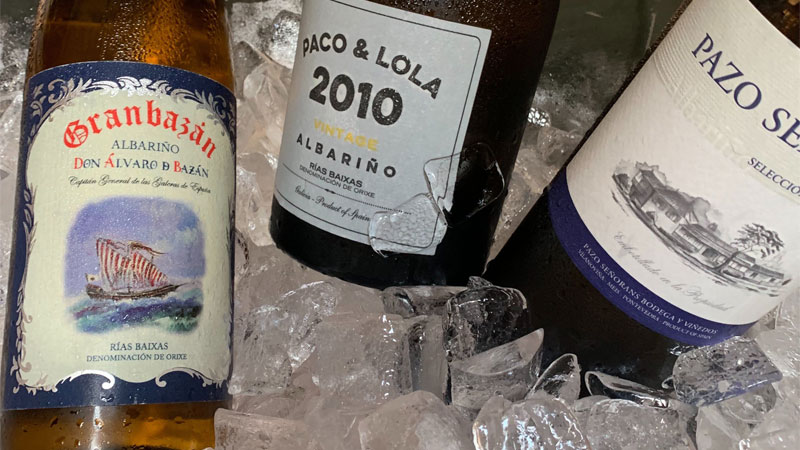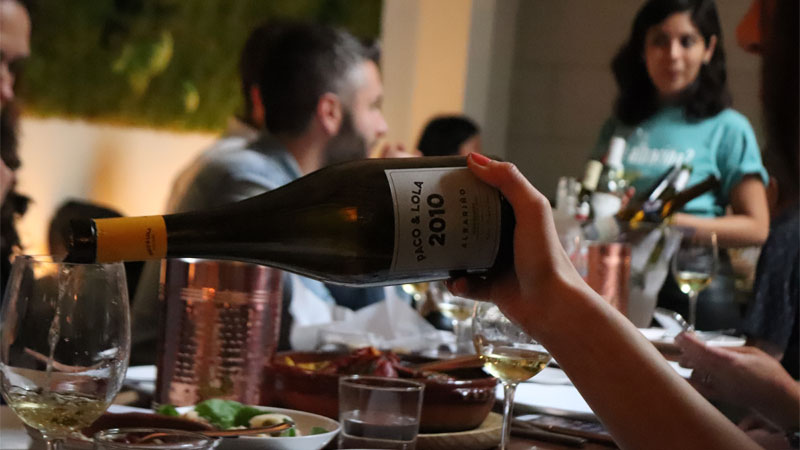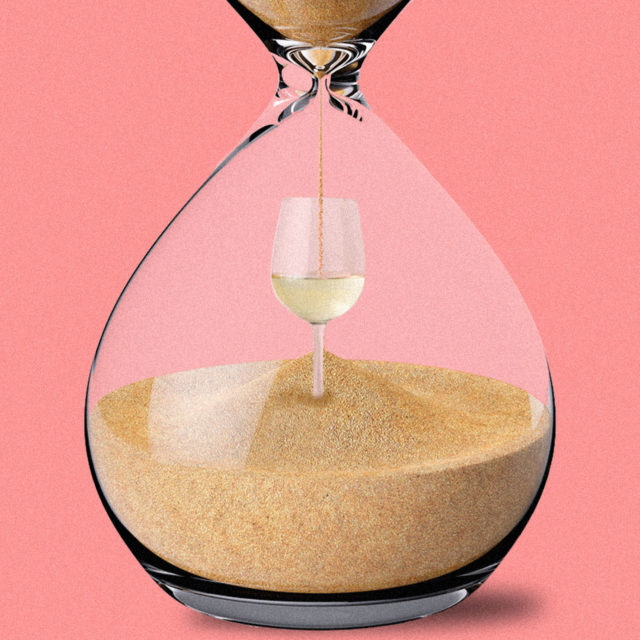Perhaps because it pairs so well with oysters and impromptu picnics, Albariño’s aging potential is almost always overlooked. But with close attention in the vineyard, and careful decision making in the winery, this grape can make wines capable of evolving over five, 10, and even 15 years.
Famously grown in the Rías Baixas region on Spain’s Galician coast, Albariño wines are intensely aromatic, with tart green fruit, peaches, and a hint of ocean spray on the palate. Across the River Minho, or Miño, in neighboring Portugal, the grape is the dominant component of the region’s famed Vinho Verdes, and is also produced as a varietal wine labeled Alvarinho.
Typically, these wines are crafted to be enjoyed young and fresh, allowing the fruit character and vibrant acidity to shine. Yields in the vineyard are not always closely controlled, and winemakers often opt for efficient commercial yeast strains and temperature-controlled fermentation to bottle as close to harvest as possible.
Don't Miss A Drop
Get the latest in beer, wine, and cocktail culture sent straight to your inbox.But the very characteristics that make young Albariño wines so attractive can also be used to yield very different results.
“Albariño’s great aging potential comes from its high natural acidity,” Javier Izurieta Romero, export manager of Rías Baixas-based Pazo de Señorans, tells VinePair. “Acidity is the natural preservative of wine.”
In warmer-climate regions, winemakers have to fight to retain acidity. But in Galicia, where temperatures are moderate year-round, growers are instead challenged to be sure grapes can ripen enough to balance its natural acidity, Romero explains. Prolonged periods of sunshine close to harvest are essential, while lower vineyard yields and old vines can help provide concentrated fruit with impressive depth of flavor.
Following harvest, winemakers employ a number of techniques to promote ageability. Some opt for an oxidative winemaking style, using old oak for vinification and aging prior to bottling. Others stick with the large, stainless-steel vats used for younger styles. Everyone, however, agrees on the importance of lees — the flavor-giving spent yeast cells suspended in wine during and after alcoholic fermentation.
Left in contact with these cells, wines gain body and complex flavors but lose some of their freshness and tart fruit character. At his eponymous winery in Portugal, Luis Seabra champions this weightier, ageable style of Alvarinho and describes lees as the “mother” of the wine that plays a protective role in helping wines to age.
For his Granito Cru Alvarinho, Seabra harvests grapes from 25-year-old vines. Following vinification, he leaves the wine in contact with lees for one year but opts against battonage (disrupting the particles), as he feels the process adds too much weight to the wine. Other winemakers might choose to carry out battonage on a weekly basis, or leave their wines in contact with lees for periods of up to five years, without stirring.

The younger, fresher style of Albariño by far remains the most common form of production. But Seabra and Romero are not alone in favoring the concentrated, ageable style. While reporting this article, I sampled a number of bottles of varying age, each cementing a belief that not only can Albariño age, but it becomes even more interesting and enjoyable when vinified to do just that.
Bottles that were around five years old, including Granbazán’s 2014 Don Álvaro de Bazán, and Compañía de Vinos Tricó’s 2015 “Tricó,” were punchy and rich, with intense candied tropical fruit aromas and persisting, piercing acidity.
At close to a decade old, bottles became more interesting still. Paco & Lola’s 2010 Vintage Albariño could easily have been mistaken for high-quality aged German Riesling, while Adegas Castro Brey’s 2010 “Sin Palabras” Edición Especial was bone-dry with a pronounced oxidative character, tasting like a blend of fino sherry and still Champagne. Both wines spent five years aging in the winery before bottling.
The undisputed highlight was Bodegas Forjas del Salnés’ 2005 Leirana Ma. Luisa Lázaro. Nearly 15 years have passed since its grapes were plucked from the vines, but the wine remains remarkably vibrant and fresh, in contrast with its deep golden color. Powerful fruit notes arrive as dried apricots and ripe pear, but bottle age has added almond, cashew, and earthy aromas, and a similar oxidative calendar to the 2010 “Sin Palabras.” The influence of lees aging shows by way of lightly toasted brioche notes, while electric acidity maintains balance and firmly holds everything in check.

For as long as the concentrated, age-worthy style of Albariño remains the minority in terms of production, picking up a bottle with age requires sleuthing. Producers who age their wines before bottling, like Paco & Lola and Adegas Castro Brey, offer the easiest access to the style. Specialist Spanish wine shops such as Despaña Vinos y Más in New York; La Tienda in Williamsburg, Va.; and The Spanish Table in San Francisco are also good sources.
Max Working, assistant portfolio manager for Spanish, Portuguese, and Greek wines at New York importer and distributor Skurnik Wines & Spirits, believes that, until the market recognizes Albariño as an ageable grape, the easiest option might be to buy a bottle that’s suitable for aging and cellar it yourself.
“There’s a perception, not just among importers but among retailers, that it’s not the greatest look to have a five-year-old bottle of Spanish white on the shelf,” he says. “It’s a mindset that we’re trying to combat on a daily basis, but it takes time and it takes a lot of quality wine to overcome this perception.”
Spanish restaurants, especially those focusing on Galician cuisine, are another avenue to explore. Tomiño Taberna Gallega, located in NYC’s Little Italy neighborhood, currently carries a handful of aged Albariños (including Brey’s “Sin Palabras” Edición Especial) on its wine list. According to owner and sommelier Phil Gonzalez, “the reaction is always great” whenever he opens one for guests. “From a quality and value standpoint you just wow people,” he says.
